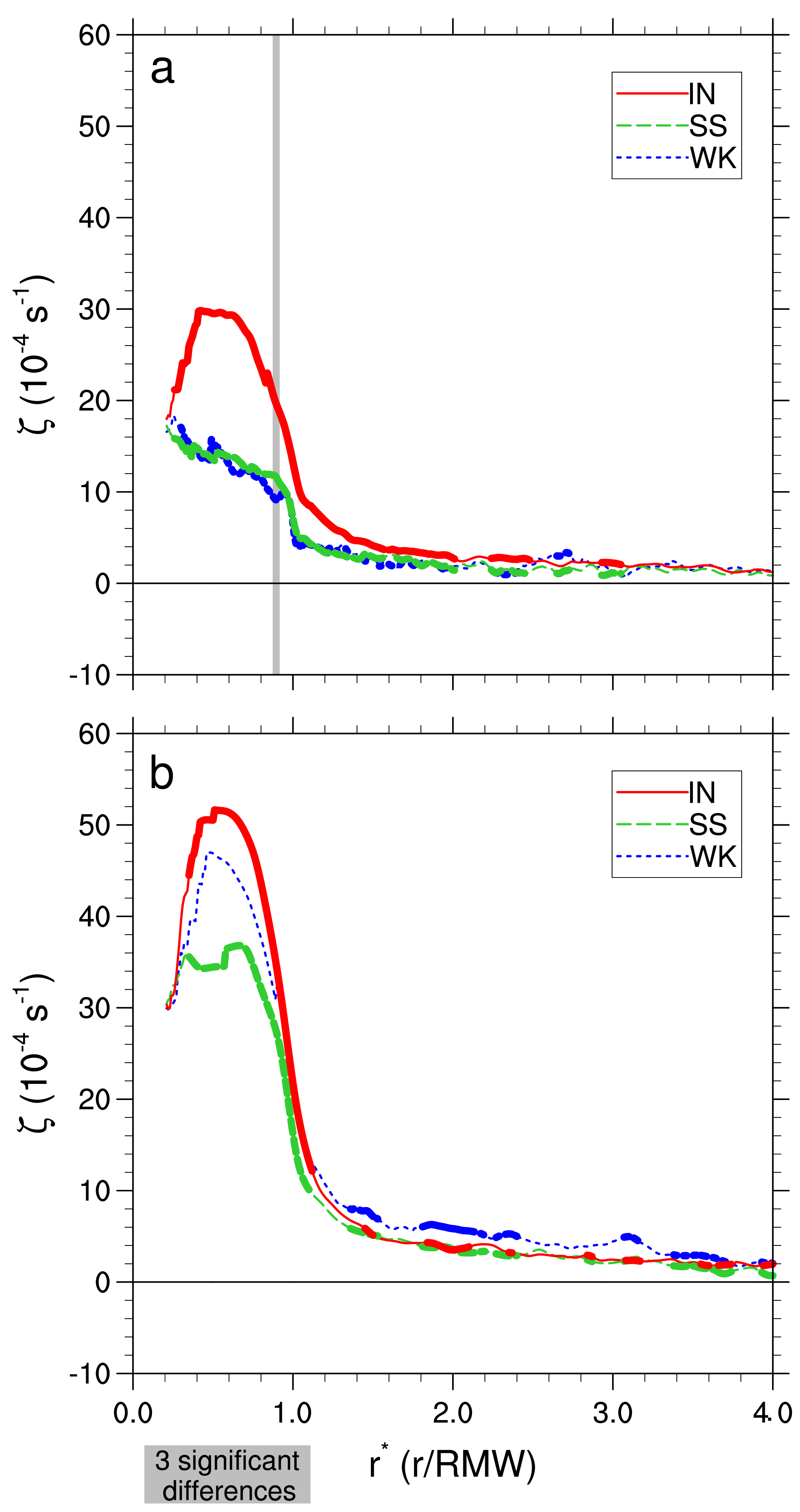Martinez, J., M. M. Bell, J. L. Vigh, R. F. Rogers, : Examining tropical cyclone structure and intensification with the FLIGHT+ Dataset from 1999 to 2012. Monthly Weather Review, 145, 4401-4421 , https://doi.org/10.1175/MWR-D-17-0011.1
Key Points
Abstract
A comprehensive examination of tropical cyclone (TC) kinematic and thermodynamic structure in the Atlantic basin is created from the Extended Flight Level Dataset (FLIGHT+) for Tropical Cyclones (Version 1.1). In situ data collected at the 700-hPa flight level by NOAA WP-3D and USAF WC-130 aircraft from 1999 to 2012 are analyzed. A total of 233 azimuthal mean profiles comprising 1498 radial legs are stratified by TC intensity and 12-hour intensity change. A matrix of composite structures is created for minor (category 1 and 2) and major (category 3 and above) hurricanes that are intensifying [intensity increase greater than or equal to 10 kt in 12 h], steady-state [intensity change between +/- 5 kt in 12 h], and weakening [intensity decrease less than or equal to -10 kt in 12 h]. Additional considerations to the impacts of age on TC structure are given as well. Axisymmetric radial composites reveal that intensifying TCs have statistically significant structural differences from TCs that are steady-state or weakening, but that these differences also depend on the intensity of the TC. Intensifying TCs (both minor and major hurricanes) are characterized by steep tangential wind gradients radially inward of the radius of maximum tangential wind (RMW) that contributes to a ring-like structure of vorticity and inertial stability. Tangential wind structural differences are more pronounced in the eye of minor hurricanes compared to major hurricanes. Intensifying TCs are found to have higher inner and outer-core moisture compared to steady-state and weakening TCs. Furthermore, intensifying major hurricanes possess drier eyes compared to steady-state and weakening major hurricanes.
Key Figure
Storm-relative axisymmetric vertical vorticity composite means for (a) minor hurricanes and (b) major hurricanes. Intensifying (IN) TCs are denoted in solid red, steady-state (SS) TCs are denoted in dashed green, and weakening (WK) TCs are denoted in dotted blue. Radial locations where two composite means are significantly different at the 5% level appear thicker on the respective composite-mean curves and radial locations where all composite means are significantly different at the 5% level are shaded in gray.
Acknowledgments
This study was supported by the National Science Foundation (NSF) CAREER Award AGS-1349881 and Office of Naval Research Award N000141410118. JM was supported, in part, by the Significant Opportunities in Atmospheric Research and Science (SOARS) Program, NSF Grant AGS-1120459 and the National Science Foundation Bridge to the Doctorate Fellowship, NSF Grant 004863-00003. We thank the crews of both the 53rd Weather Reconnaissance Squadron and NOAA Aircraft Operations Center whose hours of hard work and dedication to collecting high-quality observations in tropical cyclones made this research possible. We would also like to thank Gary Barnes, Yuqing Wang, Jim Kossin, and two anonymous reviewers for their insightful comments that improved the quality of the manuscript. The Extended Flight Level Dataset (FLIGHT+) for tropical cyclones was created by the Research Applications Laboratory at the National Center for Atmospheric Research (NCAR) from data provided by the NOAA Hurricane Research Division of AOML and U.S. Air Force Reserve. The National Center for Atmospheric Research is sponsored by the National Science Foundation. The creation of this dataset was funded through a grant from the Bermuda Institute of Ocean Sciences Risk Prediction Initiative (RPI2.0). We especially thank Neal Dorst (AOML/HRD) for creating the wind center tracks and assembling the data and metadata that were vital for creation of the FLIGHT+ dataset.
